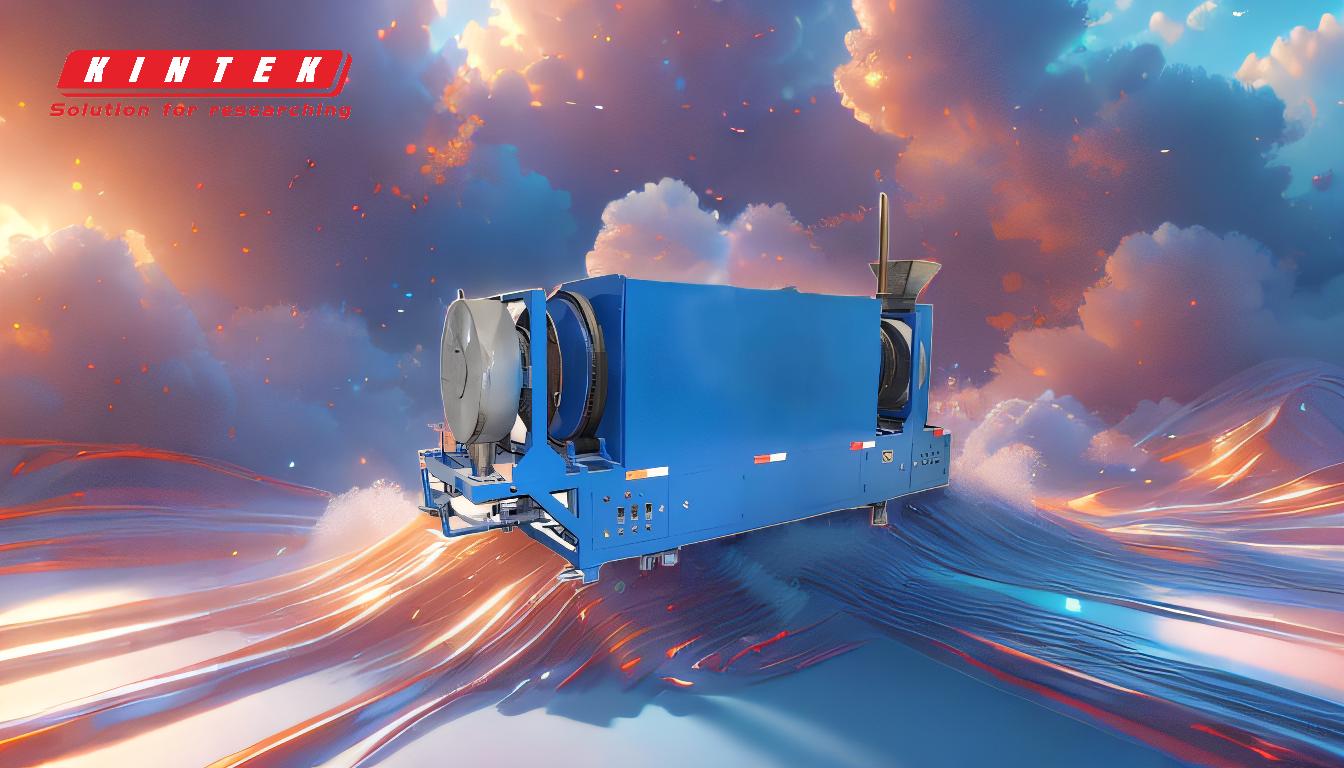Temperature significantly affects biochar properties, primarily through its influence on the pyrolysis process. The highest treatment temperature (HTT) is a critical factor that determines the chemical and physical characteristics of biochar, including surface area, porosity, and chemical composition. Higher temperatures generally lead to increased carbonization, reduced volatile matter, and enhanced surface area, but can also decrease biochar yield. The feedstock type and other process conditions, such as residence time and heating rate, further modulate these effects. Understanding these relationships is essential for tailoring biochar properties to specific applications, such as soil amendment, carbon sequestration, or water filtration.
Key Points Explained:

-
Influence of Highest Treatment Temperature (HTT) on Biochar Properties
-
Carbonization and Volatile Matter:
- Higher HTT increases the degree of carbonization, leading to a more stable carbon structure.
- Volatile matter decreases as temperature rises, resulting in a biochar with lower organic content and higher fixed carbon.
-
Surface Area and Porosity:
- Elevated temperatures enhance the development of micropores and mesopores, increasing the surface area. This makes biochar more effective for adsorption applications.
-
Yield Reduction:
- As HTT increases, biochar yield typically decreases due to the breakdown of organic compounds into gases and liquids.
-
Carbonization and Volatile Matter:
-
Interaction Between Temperature and Feedstock
-
Feedstock Composition:
- The chemical composition of the feedstock (e.g., lignin, cellulose, and hemicellulose content) influences how it responds to temperature. For example, lignin-rich feedstocks produce more stable biochar at higher temperatures.
-
Ash Content:
- Feedstocks with high mineral content (e.g., agricultural residues) may produce biochar with higher ash content at elevated temperatures, affecting its suitability for certain applications.
-
Feedstock Composition:
-
Role of Other Process Conditions
-
Residence Time:
- Longer residence times at high temperatures can further enhance carbonization and surface area development but may also lead to greater yield loss.
-
Heating Rate:
- Slow heating rates allow for more controlled decomposition, leading to biochar with more uniform properties. Rapid heating can result in uneven carbonization and lower quality biochar.
-
Residence Time:
-
Practical Implications for Biochar Applications
-
Soil Amendment:
- Biochar produced at moderate temperatures (400–600°C) often has a balanced combination of stability, surface area, and nutrient retention, making it ideal for soil improvement.
-
Carbon Sequestration:
- Higher-temperature biochar (600–800°C) is more stable and resistant to microbial degradation, making it more effective for long-term carbon storage.
-
Water Filtration:
- Biochar with high surface area and porosity, typically achieved at higher temperatures, is better suited for adsorbing contaminants in water treatment applications.
-
Soil Amendment:
-
Trade-offs and Optimization
-
Yield vs. Quality:
- Producers must balance the trade-off between biochar yield and quality. Higher temperatures improve quality but reduce yield, which may affect economic feasibility.
-
Feedstock Selection:
- Choosing the right feedstock for the desired application can optimize biochar properties. For example, woody biomass is often preferred for high-temperature biochar due to its high lignin content.
-
Yield vs. Quality:
By understanding how temperature and other process conditions influence biochar properties, producers can tailor biochar production to meet specific application requirements, ensuring optimal performance and cost-effectiveness.
Summary Table:
| Factor | Effect on Biochar Properties |
|---|---|
| Highest Treatment Temperature (HTT) | Higher HTT increases carbonization, reduces volatile matter, enhances surface area, but decreases yield. |
| Feedstock Composition | Lignin-rich feedstocks produce more stable biochar at higher temperatures. High ash content affects suitability. |
| Residence Time | Longer times enhance carbonization and surface area but may reduce yield. |
| Heating Rate | Slow rates ensure uniform properties; rapid heating can lead to uneven carbonization. |
| Applications | Moderate temps (400–600°C) for soil; high temps (600–800°C) for carbon storage or water filtration. |
Optimize your biochar production for specific applications—contact our experts today!











